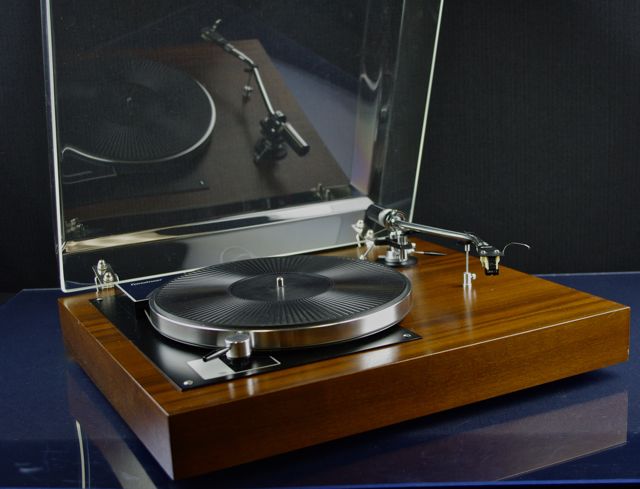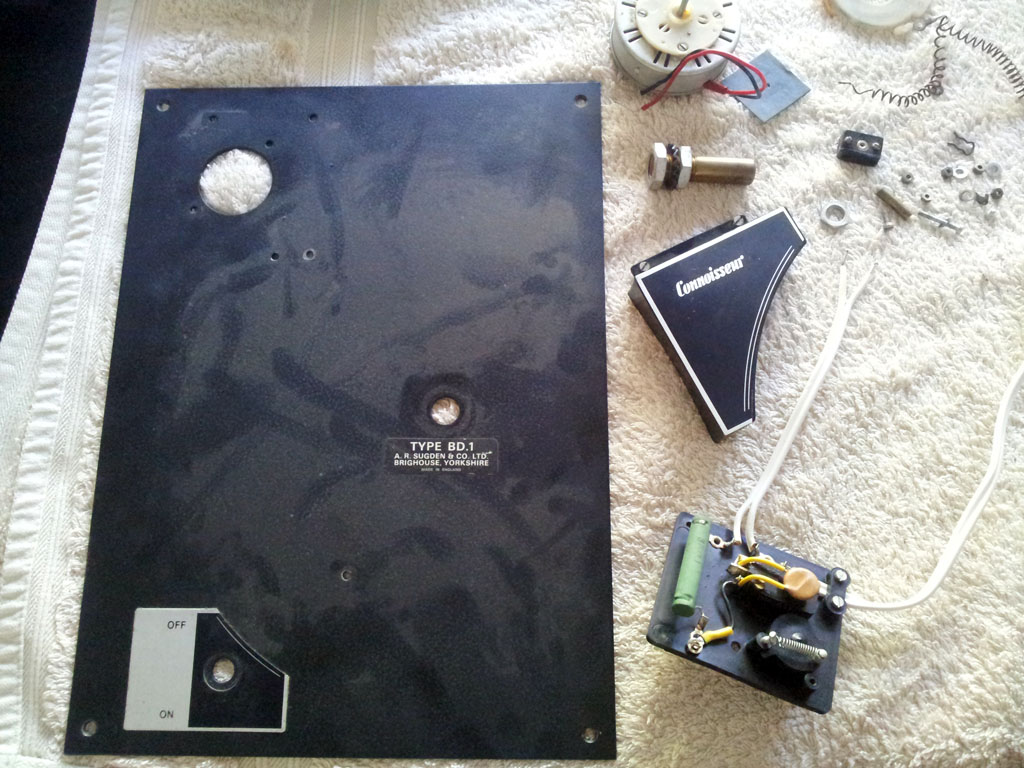Craig B
Re:trophile
I suspect that it all passed double insulated two-wire safety standards of the day, but, yes, the grounding scheme has more to do with avoiding hum induction than with reducing the 'potential' for electrocution.Hi Craig,
you say in your post "..the latter of which provides motor grounding and holds the plastic cover of the junction box on." I've been wondering about the earthing/grounding situation as it only has a 2 wire supply cord , live and neutral (blue and Brown) from the wall plug. Was the grounding path supplied via the tonearm cables and possibly the person putting the record on. 110v in the States is not too bad but UK's 240v could have Grandad popping his clogs.
Alan.
That will be your combined on/off switch/power supply mounting screw hole. Along with a ring nut that goes round the collar of the switch, these fasten this assembly to the motor board.Looking at the first picture in post#15 I see a brass screw head between the on/off switch and the platter bearing, what does it do. I have a hole but nothing to fill it.
Calling it a power supply is a bit of a stretch, though. On the UK version there exists but two components, a big power dropper resistor along with a small switch suppressor. There is no need for a phase capacitor with the single phase motor, hence the on/off switch also doubling as a clockwise rotation push mechanism.

Last edited:




